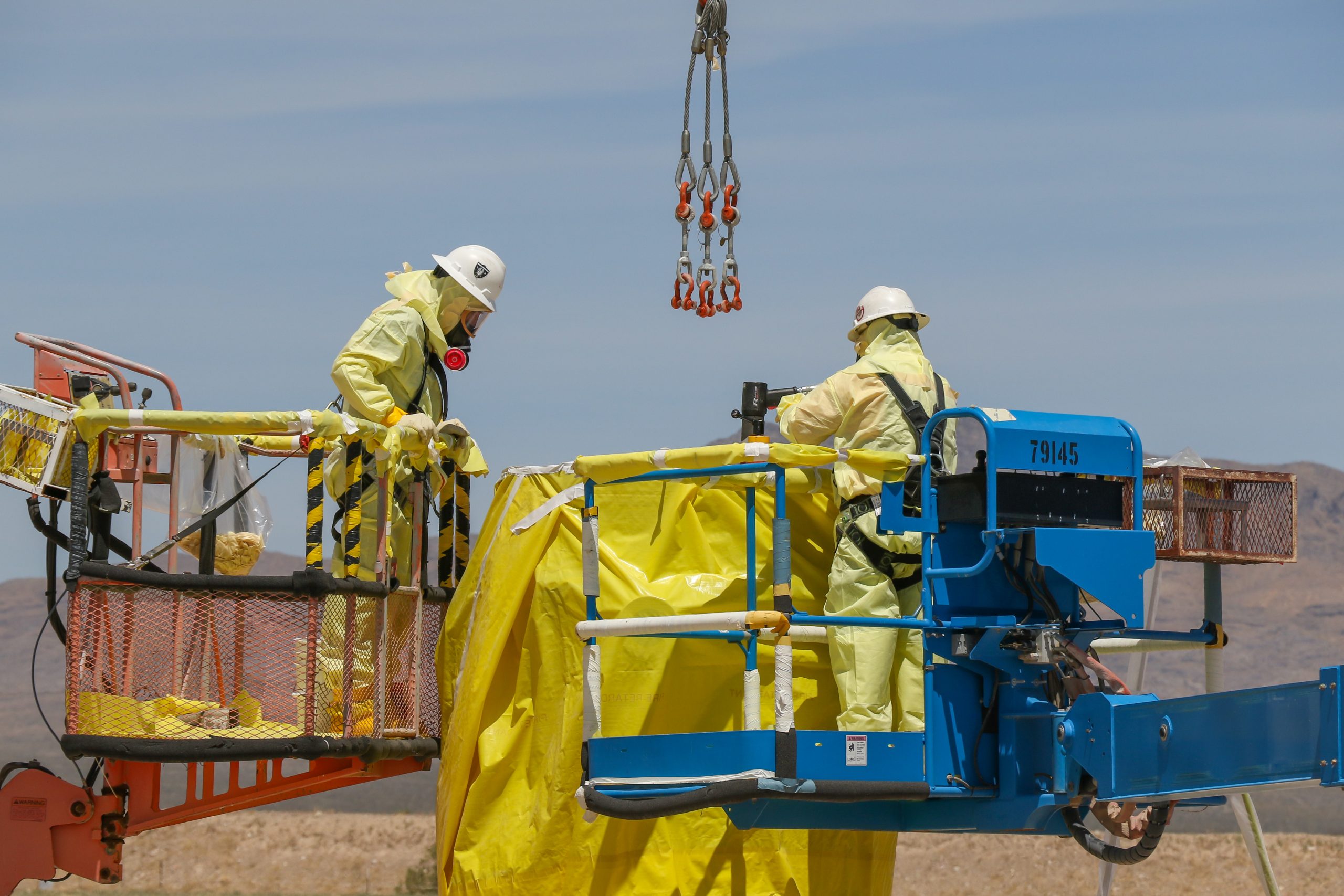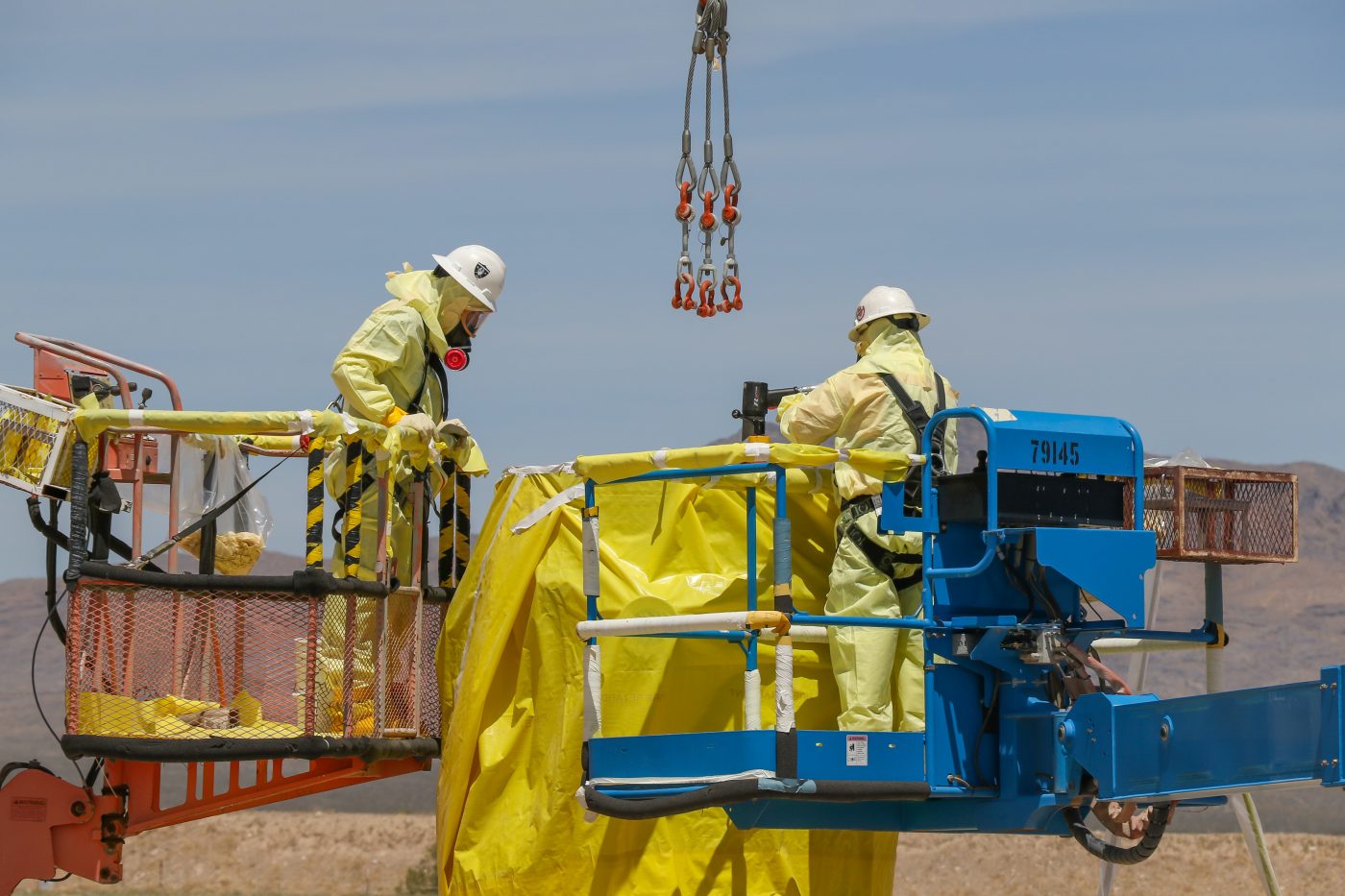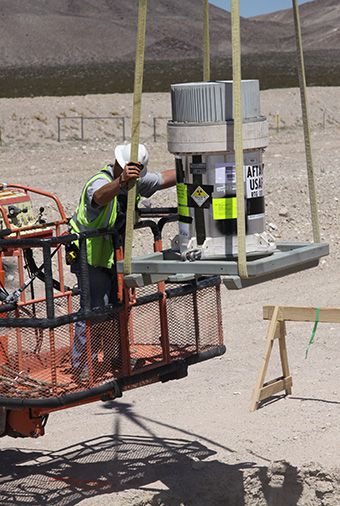
Radioactive Waste Management

Radioactive Waste Management
The NNSS plays a pivotal role in the cleanup of historic nuclear weapons sites in the United States by providing a safe and environmentally-effective facility for the permanent disposal of low-level radioactive, mixed low-level radioactive, and classified waste. The waste disposed at the NNSS is accepted only from approved DOE and DoD sites and must comply with the Nevada National Security Site Waste Acceptance Criteria (NNSSWAC).
Low-Level Radioactive Waste
Typical low-level waste includes materials such as rags, papers, filters, equipment, discarded protective clothing and construction debris. Low-level waste does not include high-level waste, spent nuclear fuel, transuranic waste, or radioactive by-product materials.

Mixed Low-Level Radioactive Waste
Mixed low-level radioactive waste contains both hazardous waste, as defined by the Resource Conservation and Recovery Act (RCRA), and low-level radioactive waste. As a result of the presence of the hazardous component, mixed low-level radioactive waste is regulated and managed separately from low-level radioactive waste. This waste is disposed in the Mixed Waste Disposal Unit at the Nevada National Security Site Area 5 Radioactive Waste Management Site. The Mixed Waste Disposal Unit is RCRA-permitted and features a multi-layer liner and collection system, which drains any potential moisture away from the buried waste containers.
Acceptance Program
All radioactive waste shipped to and disposed at the NNSS must meet rigorous regulations and stringent criteria to ensure the protection of the public, the workers and the environment.
Approval to ship waste to the NNSS is granted only after the waste generator demonstrates compliance with the NNSSWAC*. The criteria consist of specific requirements for waste form, characterization, packaging, and transportation. Radioactive Waste Acceptance Program (RWAP) personnel provide assistance, interpretation, guidance, and technical expertise on waste acceptance criteria. Program personnel are also responsible for conducting on-site audits to ensure waste generator compliance with regulations regarding the management and transportation of radioactive waste.
*Users of the NNSSWAC are responsible for ensuring that printed versions of this document are the current revision as posted on this website.
Transportation
Government and commercial entities safely transport shipments of radioactive material across the United States in accordance with Department of Transportation (DOT) requirements. The DOE strictly adheres to all DOT requirements and DOE Orders and Manuals pertaining to the transportation of hazardous and radioactive materials, including rigorous regulatory training, safety implementation, and attention to detail in all its shipping operations.
In addition to national regulations, all approved low-level and mixed low-level waste generators must comply with the NNNSSWAC, which identifies specific regional guidelines.

Reports
Transportation Reports
FY 2025
FY 2025–2nd Qtr
FY 2025–1st Qtr
FY 2024
FY 2024–4th Qtr
FY 2024–3rd Qtr
FY 2024–2nd Qtr
FY 2024–1st Qtr
FY 2023
FY 2023–4th Qtr
FY 2023–3rd Qtr
FY 2023–2nd Qtr
FY 2023–1st Qtr
Waste Volume Reports
FY 2025
FY 2025–2nd Qtr
FY 2025–1st Qtr
FY 2024
FY 2024–4th Qtr
FY 2024–3rd Qtr
FY 2024–2nd Qtr
FY 2024–1st Qtr
FY 2023
FY 2023–4th Qtr
FY 2023–3rd Qtr
FY 2023–2nd Qtr
FY 2023–1st Qtr
Reports older than those listed above are available at https://www.osti.gov.
Grant Funding
Since 2000, the Department of Energy’s Environmental Management (EM) Nevada Program has provided more than $15.1 million to communities near the NNSS to enhance county emergency response capabilities. To fund this grant, approved waste generators are charged an additional $.50 per cubic foot of classified and low-level/mixed-level radioactive waste disposed at the NNSS. The Nevada Division of Emergency Management administers and distributes the funding based upon voting results for the allocation and priority of applications submitted by the counties. Clark, Elko, Esmeralda, Lincoln, Nye and White Pine counties have used the grant funding for items such as emergency communication and response equipment, facilities and salaries for emergency managers and training officers.
